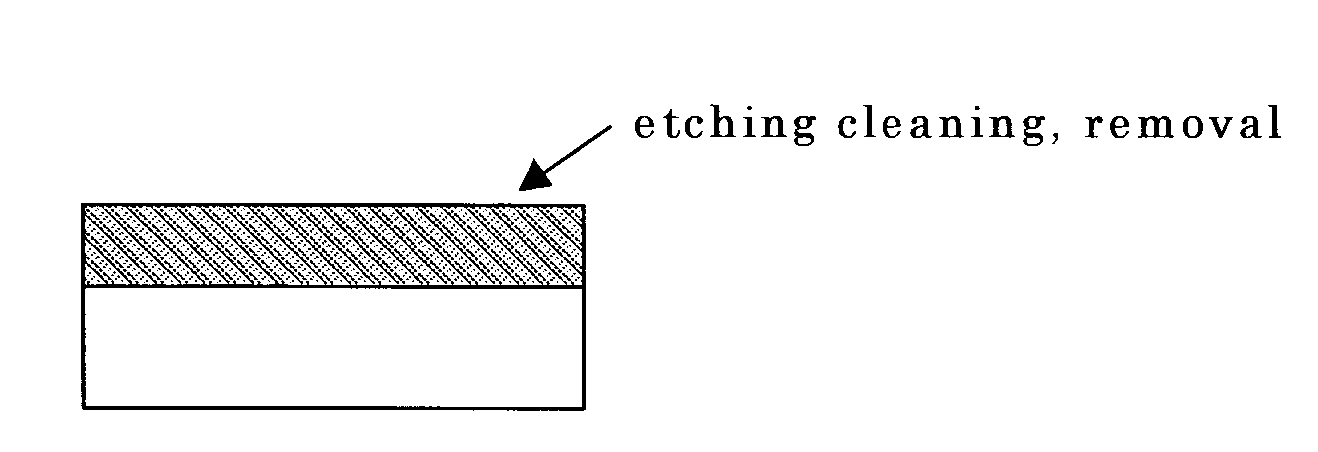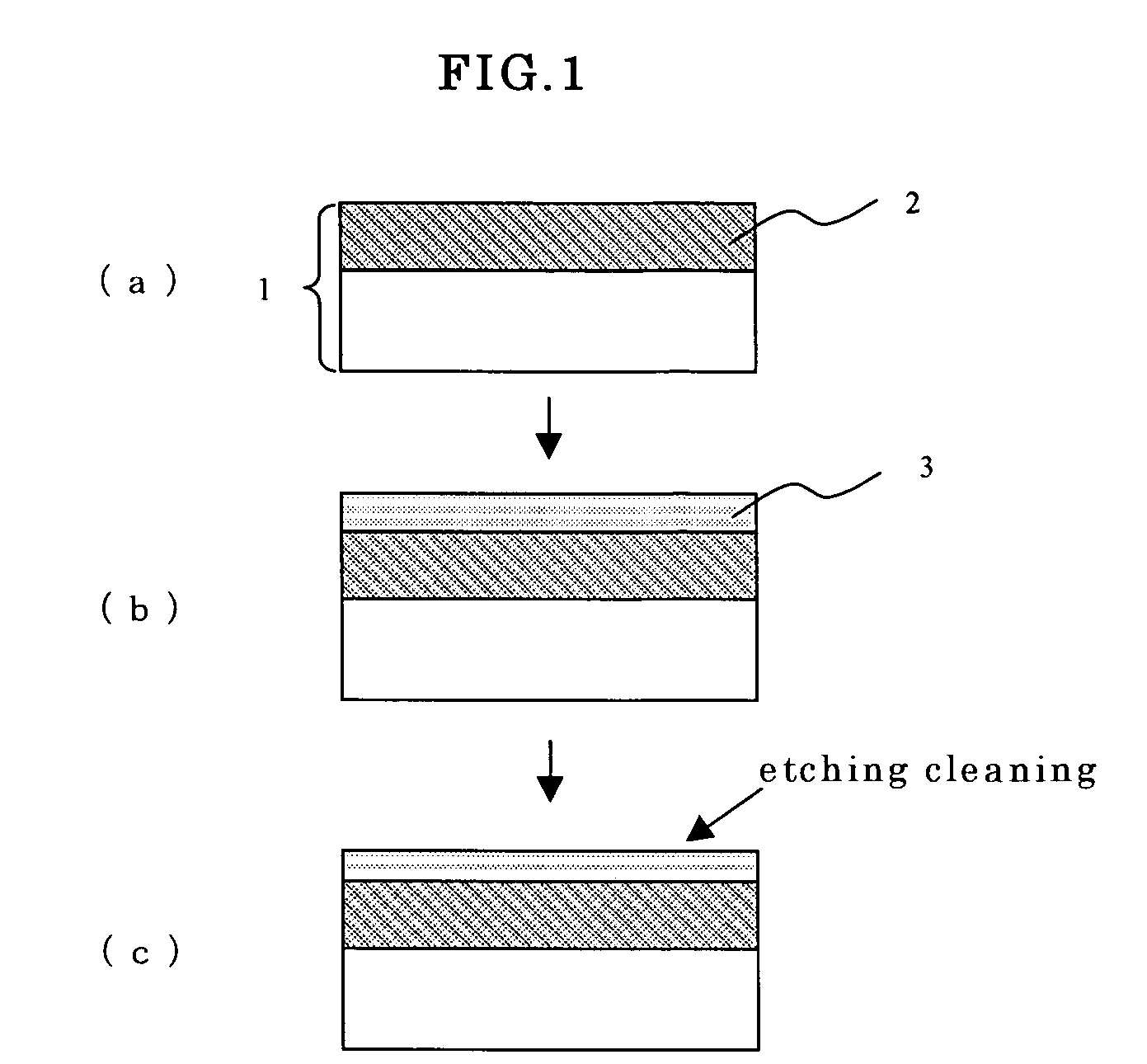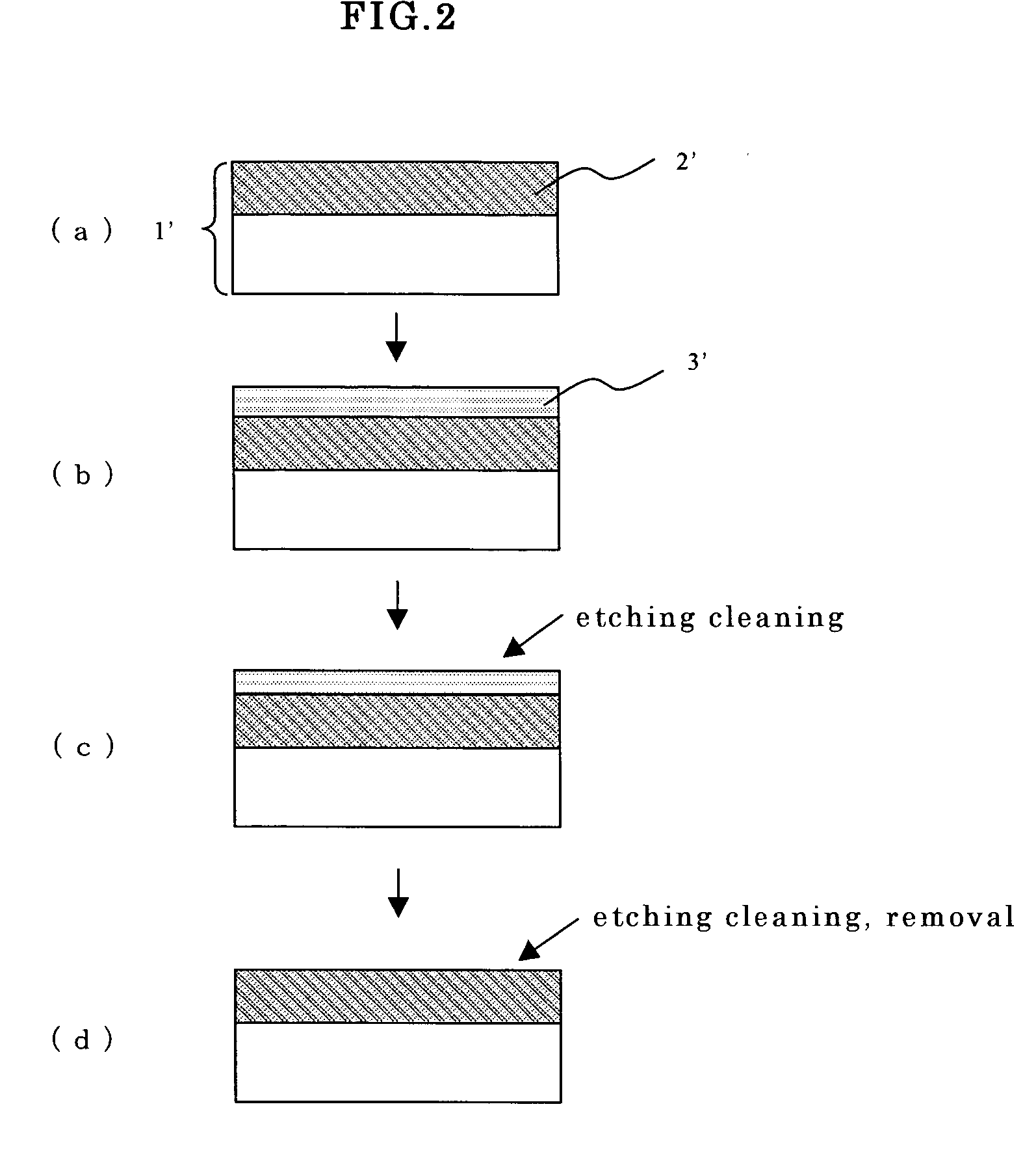Multilayer substrate cleaning method, substrate bonding method, and bonded wafer manufacturing method
- Summary
- Abstract
- Description
- Claims
- Application Information
AI Technical Summary
Benefits of technology
Problems solved by technology
Method used
Image
Examples
examples 1 and 2
, COMPARATIVE EXAMPLES 1-3
[0108] A total of 4 kinds of sample wafers were prepared: on a surface (a mirror-polished surface) of a silicon single crystal wafer having a diameter of 200 mm, a SiGe layer with a Ge concentration of 5% or 15% is deposited only by 50 nm by epitaxial method to be an uppermost surface layer as shown in Table 1 as described below (Comparative Examples 1 and 2), and as a protective film, a protective silicon layer is further deposited thereon only by 20 nm by epitaxial method to be an uppermost surface layer (Examples 1 and 2). Moreover, for a reference, a general mirror-polished silicon single crystal wafer without the above-described epitaxial layer being formed (Comparative Example 3) was prepared.
[0109] The surface of each uppermost surface layer of the five kinds of the sample wafers and silicon single crystal base wafers that were separately prepared (having a thermal oxide film with a thickness of 400 nm) were subjected to SC-1 cleaning in conditions ...
example 4
[0116] A Si0.97Ge0.03 layer (X=0.03) was grown by about 150 nm on a surface of a silicon single crystal wafer with a diameter of 200 mm by CVD method. And a protective layer of the silicon single crystal was formed by 50 nm on the surface of the Si0.97Ge0.03 layer by CVD method. Hydrogen ions (H+) were ion-implanted through the protective layer of the silicon single crystal in conditions that the implantation energy was 40 keV and the dose amount was 5×1016 atoms / cm2, thereby an ion-implanted layer was formed on the surface layer part of the silicon single crystal wafer. After the hydrogen ion implantation, the surface of the protective layer of the silicon single crystal was subjected to cleaning with a sulfuric acid-hydrogen peroxide solution at 120° C. for 5 minutes, and SC-1 cleaning was sequentially performed at 80° C. for 3 minutes. Then, the wafer was closely superposed at a room temperature on a silicon single crystal base wafer having a thermal oxide film with 400 nm cleane...
example 5
[0118] A Si0.97Ge0.03 layer (X=0.03) was grown by about 150 nm on a surface of a silicon single crystal wafer with a diameter of 200 mm by CVD method. An amorphous silicon protective layer was formed by 50 nm on the surface of Si0.97Ge0.03 layer. Hydrogen ions (H+) were ion-implanted through the amorphous silicon protective layer in conditions that the implantation energy was 40 keV and the dose amount was 5×1016 atoms / cm2, thereby an ion-implanted layer was formed on the surface layer part of the silicon single crystal wafer. After the hydrogen ion implantation, the surface of the amorphous silicon protective layer was subjected to SC-1 cleaning at 80° C. for 3 minutes, SC-2 cleaning at 80° C. for 3 minutes, and SC-1 cleaning at 80° C. for 3 minutes in order. Then, it was closely superposed at a room temperature on a silicon single crystal base wafer having a thermal oxide film with 400 nm cleaned in the same conditions, and delaminating heat treatment was performed under an argon ...
PUM
| Property | Measurement | Unit |
|---|---|---|
| Temperature | aaaaa | aaaaa |
| Temperature | aaaaa | aaaaa |
| Thickness | aaaaa | aaaaa |
Abstract
Description
Claims
Application Information
 Login to View More
Login to View More - R&D
- Intellectual Property
- Life Sciences
- Materials
- Tech Scout
- Unparalleled Data Quality
- Higher Quality Content
- 60% Fewer Hallucinations
Browse by: Latest US Patents, China's latest patents, Technical Efficacy Thesaurus, Application Domain, Technology Topic, Popular Technical Reports.
© 2025 PatSnap. All rights reserved.Legal|Privacy policy|Modern Slavery Act Transparency Statement|Sitemap|About US| Contact US: help@patsnap.com



